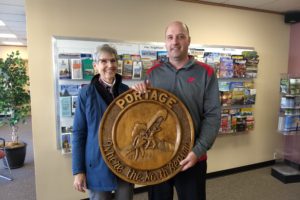We all know that no event ever happens in isolation. So when it comes to the Depression and the programs like the CCC that we’ve been talking about, I’ve been wondering what led up to this period of time and what came out of it. In Mr. Hill’s book that we looked at in an earlier post, he gave his opinions since he lived through the Depression and worked in CCC camps. This post summarizes what I’ve learned through him.

why this is important to me
When I was in college, in order to graduate with a degree in English literature, I had to pass an oral exam where I could be asked any question about what I had studied over the past 4 years. Yikes! To study for this oral exam in front of my professors, I looked at literature from an historical perspective and how ideas from one period of time led into the next period and then to the period after that. Even my art history class made more sense because I had seen how artists tended to be on the forefront of new ways of thinking and living and helped (pushed) us to make changes that we might not have wanted to make on our own. Luckily I studied the right way for the oral exam, because my professors asked me to trace the theme of love through the generations. I was ready, I passed, and I graduated.
what led to the Depression
What I’m sharing here is the highlights (for me) of Mr. Hill’s conclusions from chapter 2 of his book. Of course the causes and their effects are so much more involved than what you’ll be reading in this post, but this gets us going.
Mr. Hill and others at the time believed that WWI (1914-1918) set up the conditions that the nation faced in the 1930s. Europe had had to switch all of its manpower and industrial production from personal consumption to promoting the war effort. They couldn’t produce enough foodstuffs or other basic items to feed and maintain their military and their own civilian population. They needed help from the U.S. for supplies and food, especially after we entered the war in 1917.
With this need, we cranked up our manufacturing and food production so much that when the war was over and Europe started supporting itself again, we had a glut of resources and food in the 1920s that we weren’t able to use. For a while life was good with this overabundance, but the overstocked warehouses and insufficient sales lowering profits caused businesses to close down and thousands laid off from work.
Farmers felt the slowdown first. Agricultural prices fell because of too much supply and not enough demand. Rural economic conditions grew worse as farm families couldn’t purchase needed equipment and supplies. Farmers left their land for the cities to look for jobs. Mr. Hill said that 1/4 of the farmers in the United States lost their farms during this time.
As conditions grew worse for manufacturing plants and other industries, the stock market crashed on Tuesday October 29, 1929. Investment losses on that day were estimated at 8 to 9 billion (with a B) dollars. By mid-November, stock losses totaled at least 30 billion dollars, which was almost twice the amount of day’s national debt and nearly equal to the cost of America’s fighting in WWI.
Then President Hoover believed that the marketplace could correct itself without massive government involvement and that good times would return soon. But it didn’t. He couldn’t foresee that large amounts of involvement and money invested in new social and economic programs would be needed to create jobs and get people back to work. At the end of Hoover’s term in office, more than 13,000,000 people were unemployed (unofficial figures went as high as 15,000,000). States and municipalities were quickly running out of money, and the Red Cross could only give out $.75/week per family for food in some areas.
Droughts and windstorms across the United States made problems even worse during the early 1930s. And our problems affected Europe and much of the rest of the world.
In the darkest days of the Depression, governor of New York, Franklin D. Roosevelt, ran for president and won in November 1932. Right after he took office in early 1933, he began instituting the large programs we’ve been talking about, including the Civilian Conservation Corps (CCC) that began restoring our natural resources as men were put back to work and families back home received most of their salaries.
other projects during the Depression
Remember we had talked about the “Dust Bowl” in the nation’s central region? Crop withering drought and gigantic dust storms that darkened the sun in the middle of the day forced tens of thousands of families into bankruptcy so they had to abandon their farms. In a massive effort, CCC boys planted windbreaks, or shelter breaks, strategically scattered across the Great Plains from Canada to Mexico. Over 233,000,000 trees in all helped stop severe erosion and protect wildlife and agricultural land.
These young men helped out during emergencies all over the United States wherever they were needed during floods, fires, hurricanes, or snowstorms. At times they searched for downed planes or missing persons in mountains, deserts, or forest.
Throughout America, the CCC saved and protected local, regional, and national historic sites for us to enjoy and learn from. The most famous of the CCC camps was on a Maryland mountain top that was repurposed as a presidential retreat by President Franklin Roosevelt. It was called “Shangri-La” then, but President Dwight Eisenhower renamed it Camp David in honor of his grandson, David Eisenhower. Since then all of our First Families have stayed there and many meetings and decisions of national and international importance have occurred on this mountaintop.
what happened after the Depression
So a world war got us into this problem, and another world war helped us get out of it. As our industries started producing products for war to help Europe fight its war with Germany, men started back to work in these large manufacturing businesses. When Pearl Harbor was attacked and the United States was at war, a whole generation of young men were ready to sign up. Their years in the CCC getting physically fit by working hard outside, eating healthy and filling meals, learning how to work together with others who were different from themselves, developing new skills, and being used to living in a structured environment prepared them for military life. Without the benefits of the CCC, the war may have had a different ending.
Here are some stats that Mr. Hill included in chapter 8 of his book.
- Of the 3 million Americans who volunteered for the CCC, 225,000 of them were WWI veterans who were able to organize into their own companies so they’d have a chance to rebuild their lives in the camps.
- Nearly 90% of the enrollees later served their country in wartime since they were already accustomed to barracks life, knew how to get along with others, were disciplined, and could take and give orders.
- Their “let’s get it done” attitude helped them endure their present and future service for their country.
- In their last year of peace before Pearl Harbor, 80 CCC camps were built on military installations. Enrollees helped construct barracks, airfields, target ranges, parachute landing sites, off-post recreational centers, and other facilities. Boys also built firebreaks, roads, trails, and telephone and water systems on military reservations.
- At military hospitals and reception centers, CCC enrollees served as clerks, bookkeepers, cooks, bakers, grounds keepers, and maintenance personnel.
- With national defense goals in mind, education and training for the CCC enrollees expanded to include noncombatant skills necessary for a functioning modern military organization.
In 1941, vocational training for 266,759 enrollees included:
- 500 enrollees worked alongside skilled mechanics at 55 motor repair shops so they’d be ready to work in auto mechanics shops at military motor pools at home and overseas
- over 1000 enrollees trained at 44 cooking and baking schools in courses from several weeks to 2 months so that thousands of CCC-trained cooks and bakers could serve in the mess halls of the Army, Navy, and Marine Corps whether on land or sea
- 500 enrollees at a time attended 26 radio schools, learning to be radio operators and technicians
By this time in our history, these boys were needed in the armed forces or working at defense contractors. The unemployment problems of the previous decade vanished as the military services, factories, railroads, and farms began making greater demands on the nation’s manpower. Since the economy was doing better, the families back home didn’t need the financial help from their sons, so the “relief” provision for new recruits was removed in 1937. The CCC’s primary role as a welfare agency had become outmoded, and young men from middle class homes began to volunteer in the CCC.
The CCC was dissolved by the Senate and House on July 30, 1942. Its organizational structure, facilities, and equipment were turned over to the War Department and other agencies. But all over our nation we can find sites that the CCC either built, rebuilt, or restored for the rest of us to enjoy. We owe so much to them.
What a great look at the CCC in the middle of Georgia at 2 of our state parks. Now we’re onto another park to explore and learn from. So glad you’re taking this trip with us!




